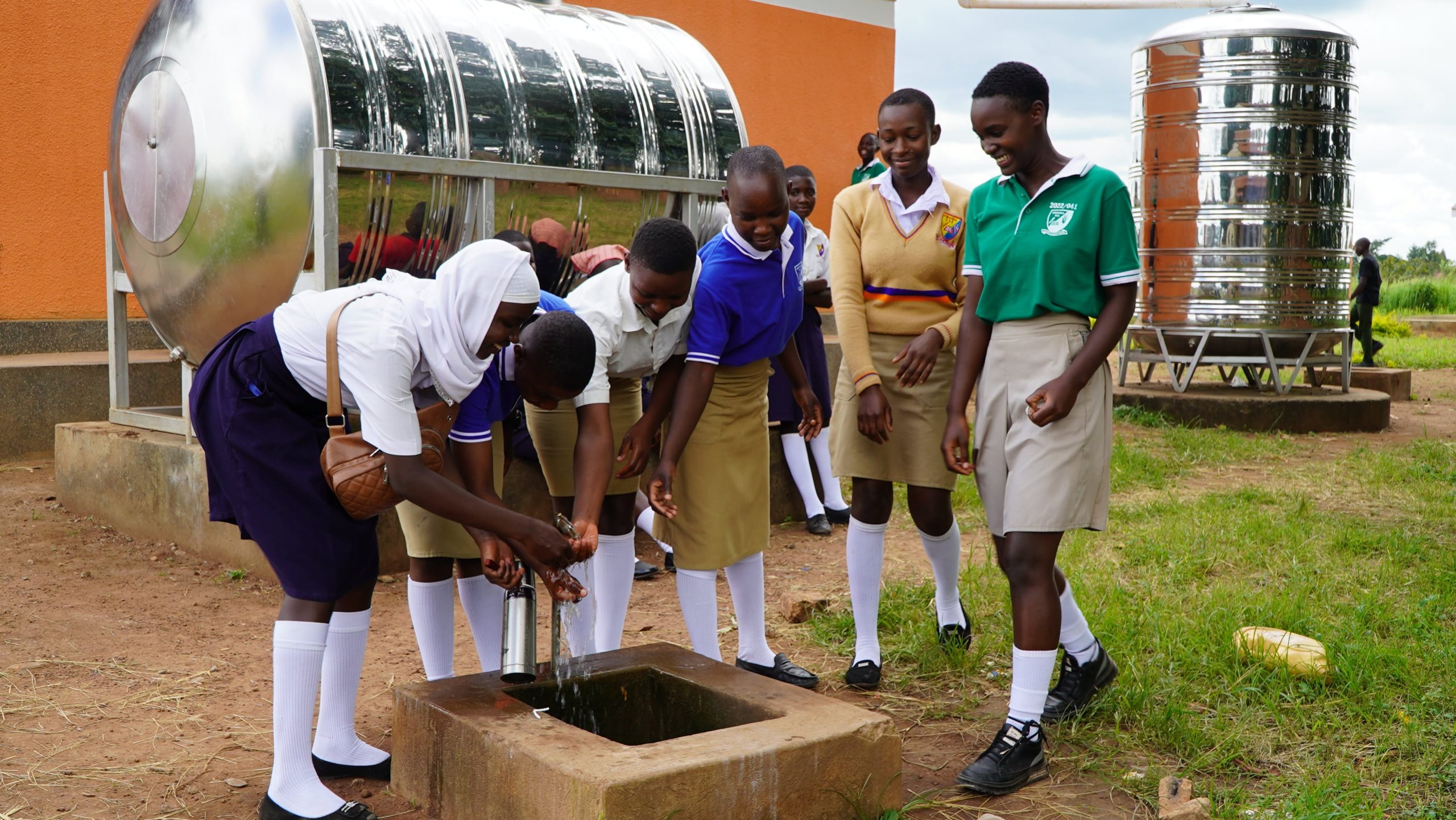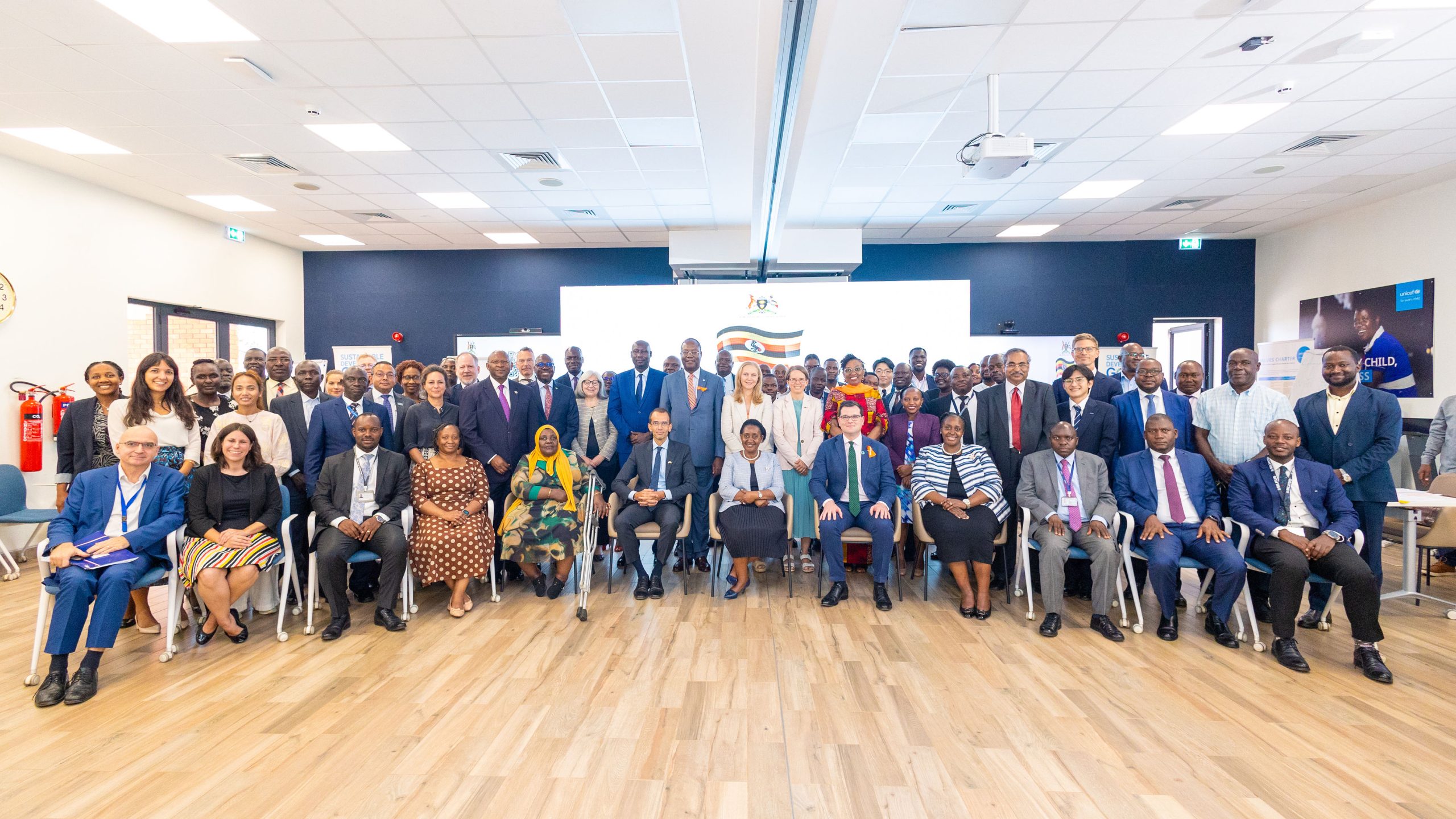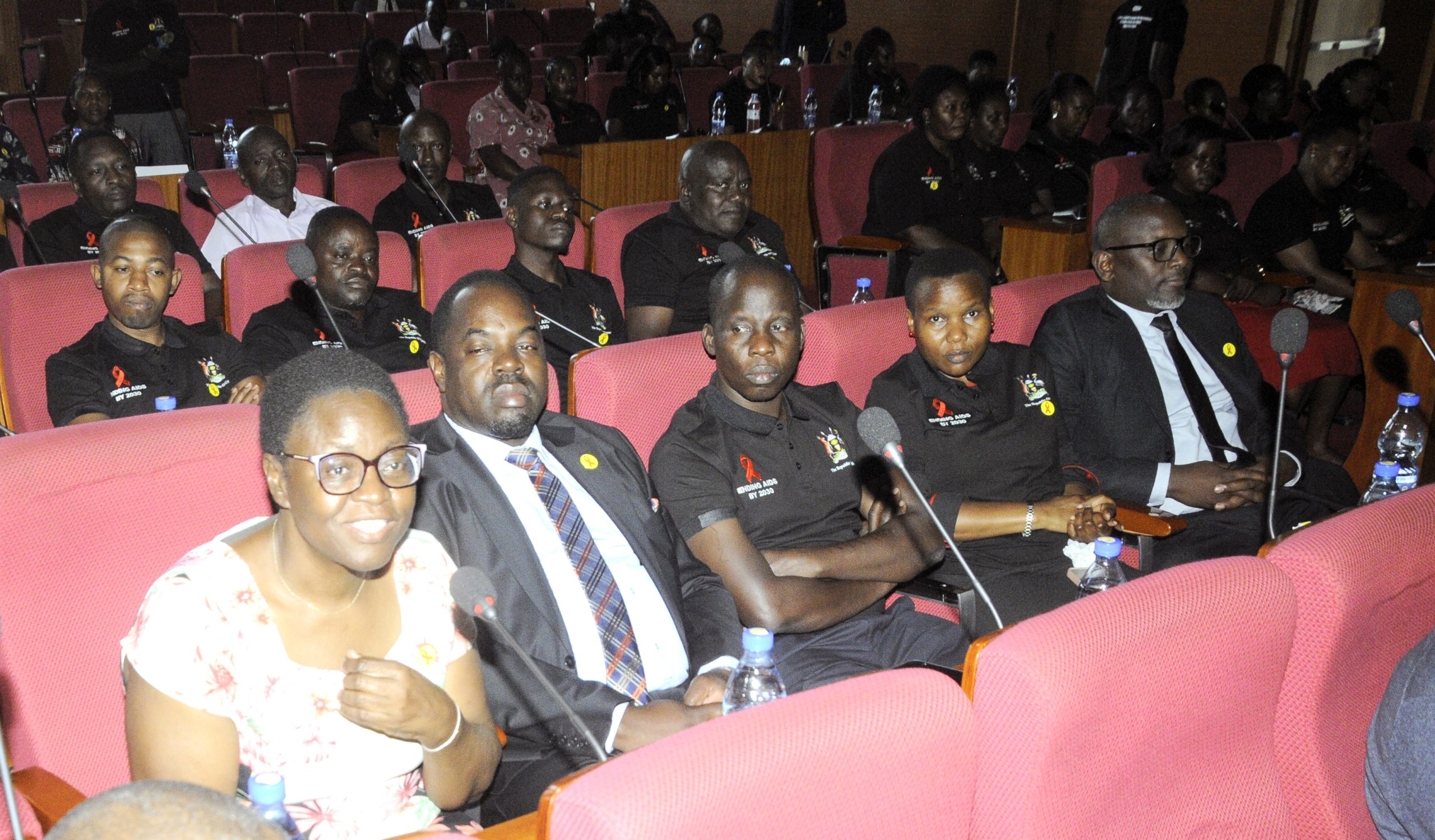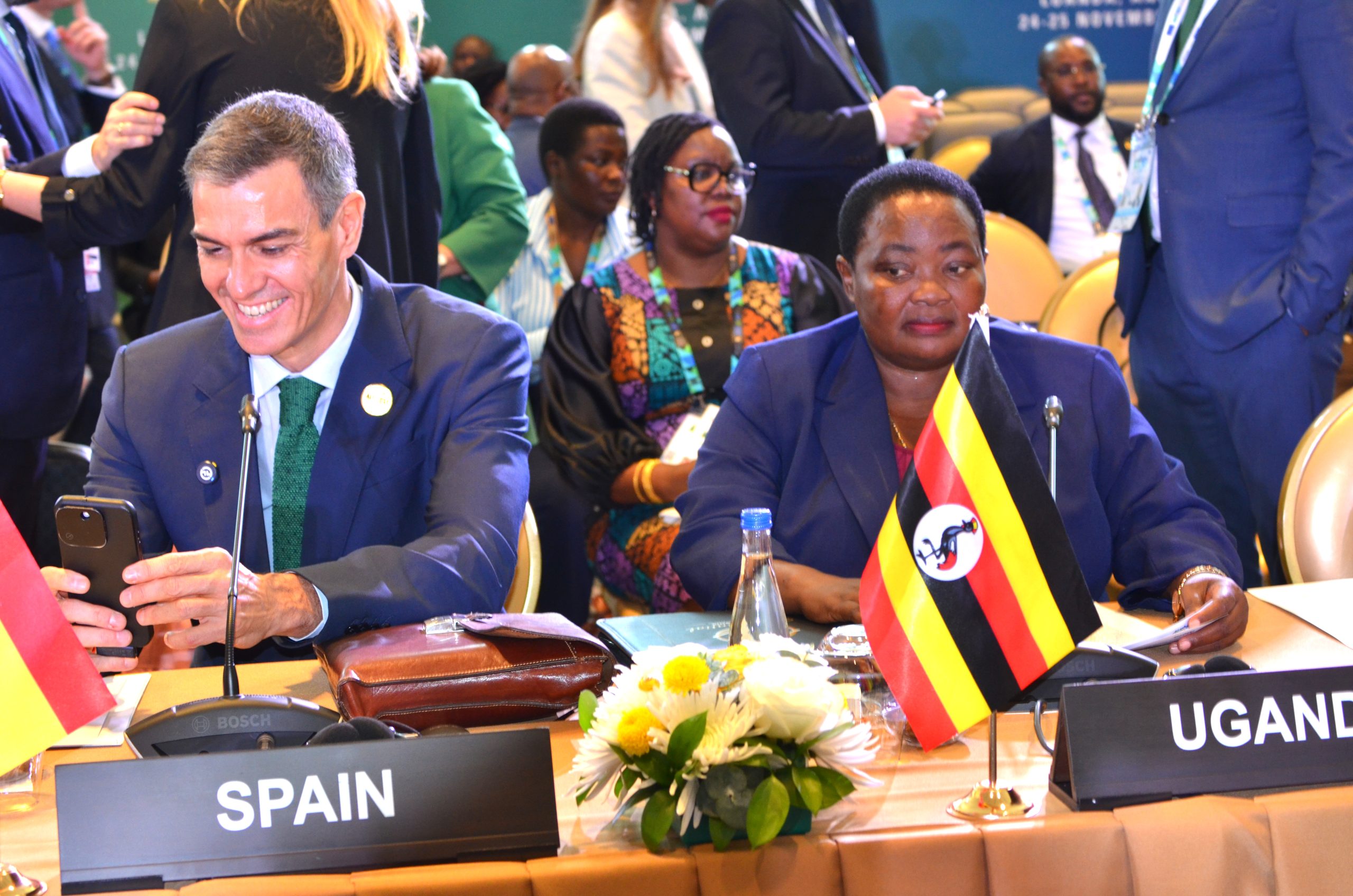By: Robert Owiny
It was 19th century French poet, Alfred Mercier who held that, “what we learn with pleasure we never forget”. Indeed, learning in a pleasant environment boosts learners’ understanding, motivates teachers, enhances better outputs and improves learning outcomes.
This is undoubtedly why schools whose infrastructure were upgraded by the Office of the Prime Ministers’, Development Response to Displacement Impacts Project(DRDIP) have recorded remarkable strides around learners’ enrollment, retention and academic performance in national level examinations.
There are innumerable stories of change across DRDIP supported schools within the 15 districts of intervention spanning from: south western Uganda (Isingiro, Kamwenge, Kyegegwa), West-Nile (Arua, Madi-Okollo, Terego, Koboko, Yumbe, Obongi, Adjumani), Bunyoro (Kikuube, Hoima, Kiryandongo) and Acholi(Lamwo).
At Rwamwanja primary school in Kamwenge district where the project constructed three blocks to house: six classrooms, offices and staffroom, the enrollment shot up from 2,135(1,186 boys, 949 girls) in 2018 before intervention to currently 3,932(1,940boys, 1,992 girls), a screaming 84% growth. Special to note is the exponential progression in girl child enrollment and retention which exploded by 110% surpassing that of the boy child.
Annet Kezabu, the school head teacher, says the number of girls went up as a result of sanitary facilities that came along with the classroom blocks. “DRDIP also put up a 15 stance latrine, well segregated to cater for; girls, boys, children with disabilities and teachers”. She adds that, “the girls’ latrine is fitted with changing rooms and an incinerator making it hygienic and convenient for girls undergoing menstrual periods, this attracted more girls to our school”.
Rainwater harvesting, lighting facilities, environmental and social safeguards through greening are part of the DRDIP package for refurbished schools. In terms of performance in primary Leaving Examinations (PLE), Rwamwanja has been improving gradually. In 2018, there was only one (01) pupil who passed in grade one, none (00) attained first grade in 2019 but two (02) candidates made it in 2020 and up to four (04) pupils passed in first division in 2022. “The conducive environment is attracting parents to entrust us with their bright pupils now”, says teacher, Kezabu.
Located in the refugee settlement, Rwamwanja Primary School serves both refugee children and those from host communities with the former accounting for 90% of the school’s total enrollment.
In Kyegegwa district, Kazinga primary school has been nicknamed, ‘university’ by the locals owing to the shift in its look after DRDIP intervention. Sylvia Kunhiira Atenyi who has three daughters in the school says, “this school was deserted because there was not enough space for learners, let alone the ugly structures that needed urgent renovation, it was not safe for girls as latrines were not enough and not clean”. “Now it is a university you can see for yourself”, Kunhiira adds, with a grin.
Kazinga head teacher, Samuel Agaba says, the project aspect of institutional greening which came as part of the renovation, has promoted environmental learning opportunities. “The water harvesting input equally saved learners from moving three (03) kilometer distance every day in order to access water from a stream: children were prone to waterborne diseases and a lot of time could get wasted in trying to look for water, this affected our academic performance”, Agaba recalls.
Today, 15-year-old Elizabeth Kabazunga, a girl in primary seven at Kazinga is sure of passing PLE in grade one this year. “We have water at school, nice classrooms here and the school environment created by DRDIP makes it easy for us to concentrate in class”, she says.
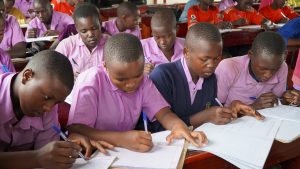
Primary Seven pupils at Kazinga Primary School (now code named University), Kyegegwa District in class
Kazinga primary school has equally had a leap in PLE performance after DRDIP intervention recently: in 2018, 2019 and 2020, before completion of project works in the school, there were negligible performances with only: two (02), one (01) and none (00) passing in division one respectively. However, just one year after completion of works, the school attained up to 10 first grades in 2022 and the head teacher says a higher number is expected in 2023.
In Nyawaiga primary school, Kikuube district where school attendance was affected by fishing business at the shores of Lake Albert, the refurbished structures attracted learners back. “As soon as these beautiful classroom blocks, latrines and water systems were completed by DRDIP, the enrollment rose from 150 pupils to 574 currently” says Felesta Kaahwa, the school head teacher.
At Kibanda Secondary School in Kiryandongo district where DRDIP provided six classrooms, three drainable latrines and metallic water tanks for rainwater harvesting, head teacher, Sarah Ssekalumba says, the value-addition by the project has improved academic performance. “The school hadn’t seen any candidate attaining first grade in Uganda Certificate of Education (UCE) Examinations since 2012, but in 2020 and 2022, we got three (03) and six (06) candidates respectively passing in division one”. Ssekalumba adds that, “the social safeguards aspect of the project increased awareness on HIV/AIDS and COVID-19 through established talking compounds and clubs”.
In Lamwo district, Lakilikili primary school deputy head teacher, Jenifer Akwero attributes the current upturn in school enrollment to the eye-catching DRDIP constructed structures. “Within six months of using the new classroom blocks, the number of learners increased from 399 to 425 this term”, she testified. Akwero adds that the school had suffered high dropout rate because, “many children in the surrounding villages would walk away seven miles to access what they called a better school, but now, they are comfortable here at Lakilikili because of the improvements through DRDIP ”.
John Kisoke the District Education Officer, Kyegegwa notes that DRDIP’s work in the education sector tremendously narrowed gaps around; classroom to pupils’ ratio, desks to pupils’ ratio, latrines to pupils’ ratio thus’ remarkably improving education quality in refugee hosting districts.
However, not all is flowery. The infrastructure support to schools have moulded additional challenges when enrolment figures trebled in some schools. At Lini Primary school in Terego district, where pupils’ enrolment is 1,700 against 10 teachers, the teacher to pupil ratio is 1:170, way above the recommended 1:55. At Rwamwanja primary school, there are only 12 permanent teachers against a prodigious 3,932 pupils, presenting a chaotic 1:327, teacher to pupil ratio and forcing teaching to be conducted in shifts and temporal tents are still being used to accommodate the excess number of learners.
Apolo Mulinde Mugisha, the Kamwenge District Education Officer hopes that the second phase of DRDIP, if funded, could tackle the prevailing gaps, “especially teachers’ welfare by way of supporting accommodation infrastructure and training more to improve on the quality of learning”.
A recent project evaluation report shows a 30% upturn in pupils’ enrollment in DRDIP supported schools. The report indicates that more girls got enrolled by 39.7% compared to boys, 19.6%. The improved learning environment by the project complemented the Government’s initiative and affirmative actions implemented through the Ministry of Education and Sports to encourage girl child education and protection.
Under primary education, DRDIP supported schools have significant improvements recorded in PLE performance. “The increase in pupils scoring divisions; one(I) and two(II), was noted while those scoring division three were reduced”, the report reads in part.
The evaluation further found out that “only 1,147 classrooms existed before DRDIP intervention, but have since increased by 983 making 2,130 classrooms. A total of 555 water tanks were added to the existing 147 and the number of classroom desks went up from 17,806 to 23,591. Latrine stances increased from 1,405 to 3,102 to-date. “This has boosted proper hygiene and sanitation in the project-supported schools for both learners and teachers, improving the teaching and learning environment”.
DRDIP is a regional program funded by the World Bank to address the effects of hosting refugees in; Uganda, Ethiopia, Djibouti and Kenya. Its overall objective is to improve access to basic social services, expand economic opportunities and enhance environmental management for refugee hosting communities. In Uganda, DRDIP is a flagship government of Uganda project being implemented under the Office of the Prime Minister.ENDS
